Special Report
Customer Service Hall of Shame
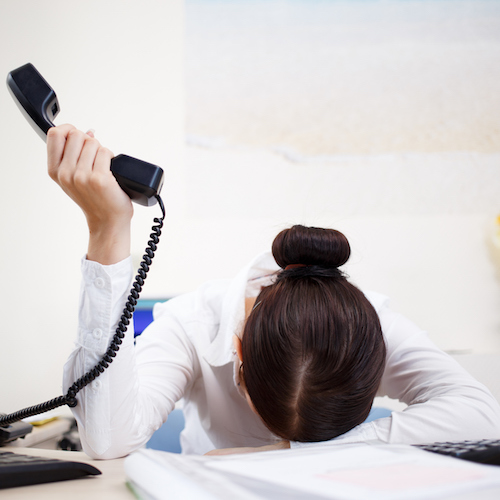
Published:
Last Updated:

Every company in the United States likes to promise an exceptional customer experience. Yet some corporations do a truly abysmal job keeping that promise — these companies provide very poor customer service.
To find the companies that provide especially poor customer experiences, 24/7 Wall St. collaborated with research survey group Zogby Analytics. Zogby surveyed more than 1,500 adults about the quality of customer service at 151 of America’s best-known companies in 17 industries. Each respondent was asked to rate each company’s service as excellent, good, fair, or poor.
[in-text-ad]
The companies with the highest share of poor ratings make up the Customer Service Hall of Shame, while those with the highest share of excellent ratings make up the Customer Service Hall of Fame. For the third straight year, cable service provider Comcast tops the Hall of Shame as the company with the worst customer service.
Click here to see the Customer Service Hall of Shame.
Click here to see the Customer Service Hall of Fame.
Click here to see our full methodology.
Cable, satellite, and wireless service providers make up eight of the 15 companies on this year’s Hall of Shame. Two banks, including each of their credit card divisions, also rank very low. Low-cost retailers Walmart and Kmart as well as insurance companies Progressive and Allstate also made the list this year.
In an interview with 24/7 Wall St., Tim Calkins, clinical professor of marketing at Northwestern University’s Kellogg School of Management, said “getting things done in an an accurate manner, on a timely basis, and at a reasonable price” is fundamental to customer service. While brand perception can shape the experience of these fundamentals, companies who fail to meet this expectation of service tend to be rated poorly.
Ultimately, customer satisfaction is driven by expectations. Customer service expert and consultant Shep Hyken explained that customer expectations for companies with notoriously poor customer service are very high because of the standards set by companies with good customer service. Hyken said that a very good customer service experience at a restaurant such as Starbucks, for which replacing a bad cup of coffee is relatively easy, can raise expectations when contacting poorly rated broadband, network, or television providers’ call centers. The difference, Hyken noted, is that an interruption in cable service is far more difficult to address.
Cable and Internet service providers clearly fail to meet customer expectations of good service. While the expectations may be too high in some instances, the poor ratings are more often due to specific customer service issues at these companies. Comcast, AT&T, Verizon, and T-Mobile are all on this year’s Hall of Shame. The presence of virtually the entire cable and network provider industry may itself explain the poor service. Without a competitive environment, Calkins explained, “companies are sometimes underpressured to deliver great customer service.”
In other words, without suitable alternatives for customers, these companies can essentially get away with bad customer service. In an email exchange with 24/7 Wall St., Praveen Kopalle, professor of management at the Tuck School of Business at Dartmouth College, gave the example of signing up for a two-year contract with a cable company. In these cases, “you feel like you are stuck with a monopoly.”
Most Americans also perceive the banking and financial industry negatively. On one hand, low public perception of banks such as Wells Fargo and Bank of America is likely due to the role they played in causing the latest recession. Each bank paid large fines to the federal government for issuing bad loans leading up to the housing and financial crises. In addition, it seems customers have no shortage of grievances with current large financial institutions’ customer service. When asked to choose the most bothersome aspect of big banks, the most commonly cited problem was poor service or unfair fees.
Kopalle gave one example of this poor service. At some large banks, if you open a checking account with a low balance, any transaction with a teller comes with a fee. Since in these cases the customer must go to an ATM for the transaction, Kopalle explained, “there is no customer service at all!”
This is 24/7 Wall St.’s Customer Service Hall of Shame.

15. Wal-Mart (NYSE: WMT)
> Pct. “poor” ratings: 14.7%
Despite recent efforts to improve employee morale and public perception, Wal-Mart finds itself yet again among the companies with the worst customer service. The share of respondents who ranked their experience with the company as poor actually increased from 13.8% last year to 14.7% this year.
[in-text-ad]
Survey respondents cite knowledgeable and friendly staff as the most important aspects of good customer service. A low customer service ranking therefore often reflects poor training and discontent among company employees — and retail giant Wal-Mart, the largest private sector employer in the country, is infamous for treating its workers poorly. The company has been accused of gender and age discrimination and has historically been openly against organized labor.
The retail giant has attempted to improve its service. In the face of lagging sales in recent years, Wal-Mart aimed to improve company morale through several policy adjustments. Last year company executives relaxed the dress code and, most importantly, increased hourly wages for more than 100,000 of the company’s U.S. workers.
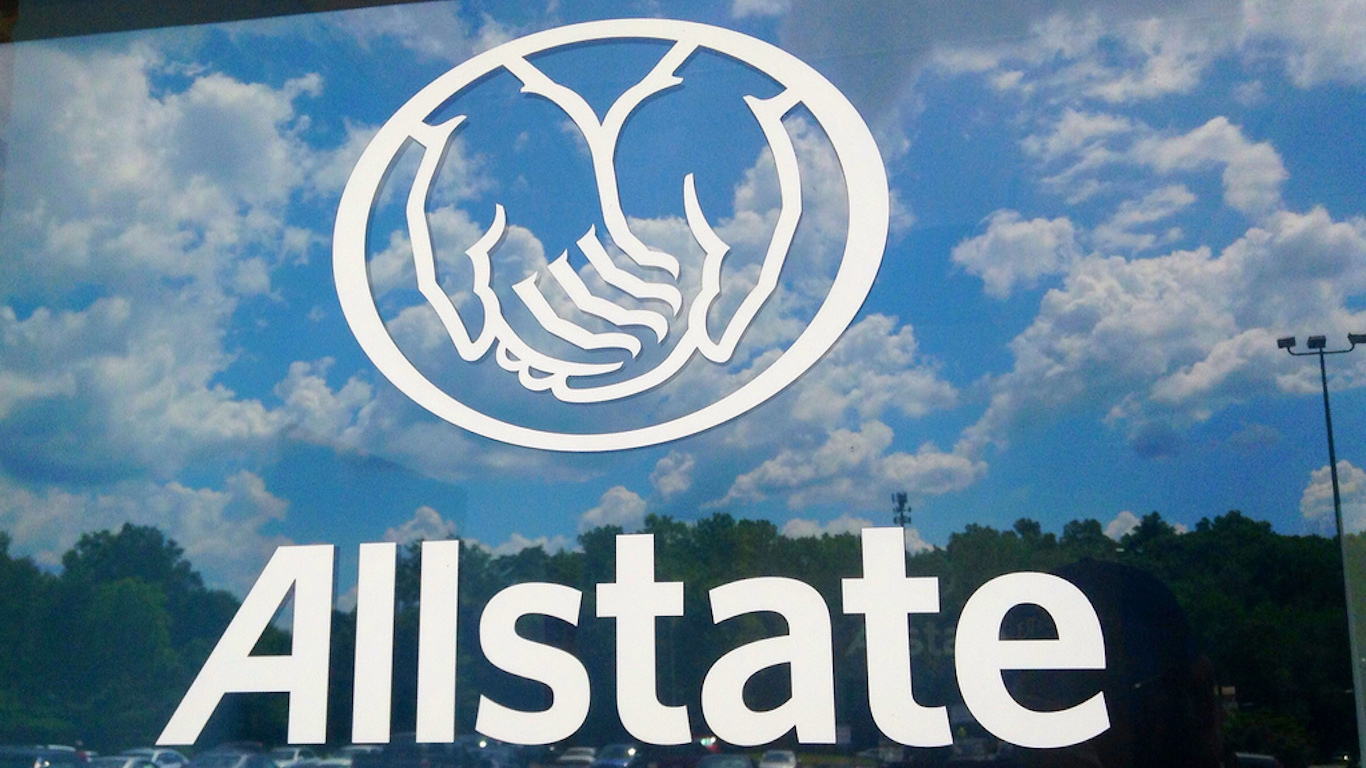
14. Allstate
> Pct. “poor” ratings: 15.0%
Allstate is making its first appearance on the Hall of Shame this year with 15% of survey respondents reporting a poor experience with the auto, home, and life insurance company. For car insurance customers in Georgia, Allstate implemented an average rate hike of 25% in May 2016. Some policyholders in the state are now paying as much 58% more than they did before the hike.
If increased rates had anything to do with customer complaints, Allstate’s popularity is likely to continue to suffer, as rate hikes will likely expand beyond Georgia. The company’s fiscal 2015 profits of $2.2 billion was lower than in both fiscal 2014 and 2013. Some auto insurance industry experts attribute declining profit and subsequent rate hikes to lower gas prices which have translated to more driving. As a result, there were more deadly car accidents in 2015 than in every year since 2008.

13. Progressive
> Pct. “poor” ratings: 15.3%
Progressive is the eighth largest non-health insurance company by the value of its premiums. This year it is one of two insurance companies with the highest levels of customer dissatisfaction. Because claim denial is a part of the business, insurance companies may be more vulnerable to negative customer reviews.
For the second time in eight years, Progressive ranks among companies with the worst customer service. While the majority of survey respondents had a positive overall experience with Progressive, a sizeable share had an unambiguously negative one. Slightly more than 15% of survey respondents reported a poor customer experience with the company.
Customer dissatisfaction with Progressive is growing alongside some recent bad press. Traditionally, insurance companies reduce rates for older, more experienced drivers with clean driving records. However, Progressive recently requested approval to raise rates for driver 65 and older in Maine. After widespread criticism, the Maine Bureau of Insurance denied the company’s request.

12. Kmart (NASDAQ: SHLD)
> Pct. “poor” ratings: 15.5%
More than 15% of survey respondents rate Kmart’s customer service as poor, the highest share of any major retailer. Kmart is owned by the same parent company as Sears, whose 8.9% poor customer service rating is significantly better.
[in-text-ad]
According to employee reviews on Glassdoor, the store’s slow and outdated cash registers frustrate both cashiers and customers. Kmart employees are also required to attempt to sign customers up for the company’s Shop Your Way rewards program, which by their account is a cumbersome process that does little to benefit the customer.
Poor customer service is likely hurting Kmart’s sales. Sears Holdings Corporation has not been profitable since 2010, and its fiscal 2015 revenue is less than half of what it was a decade ago. In an effort to return to profitability, Sears Holdings will be closing 68 Kmart locations and 10 Sears stores this year. More than 400 Kmart locations have already been closed since 2008.
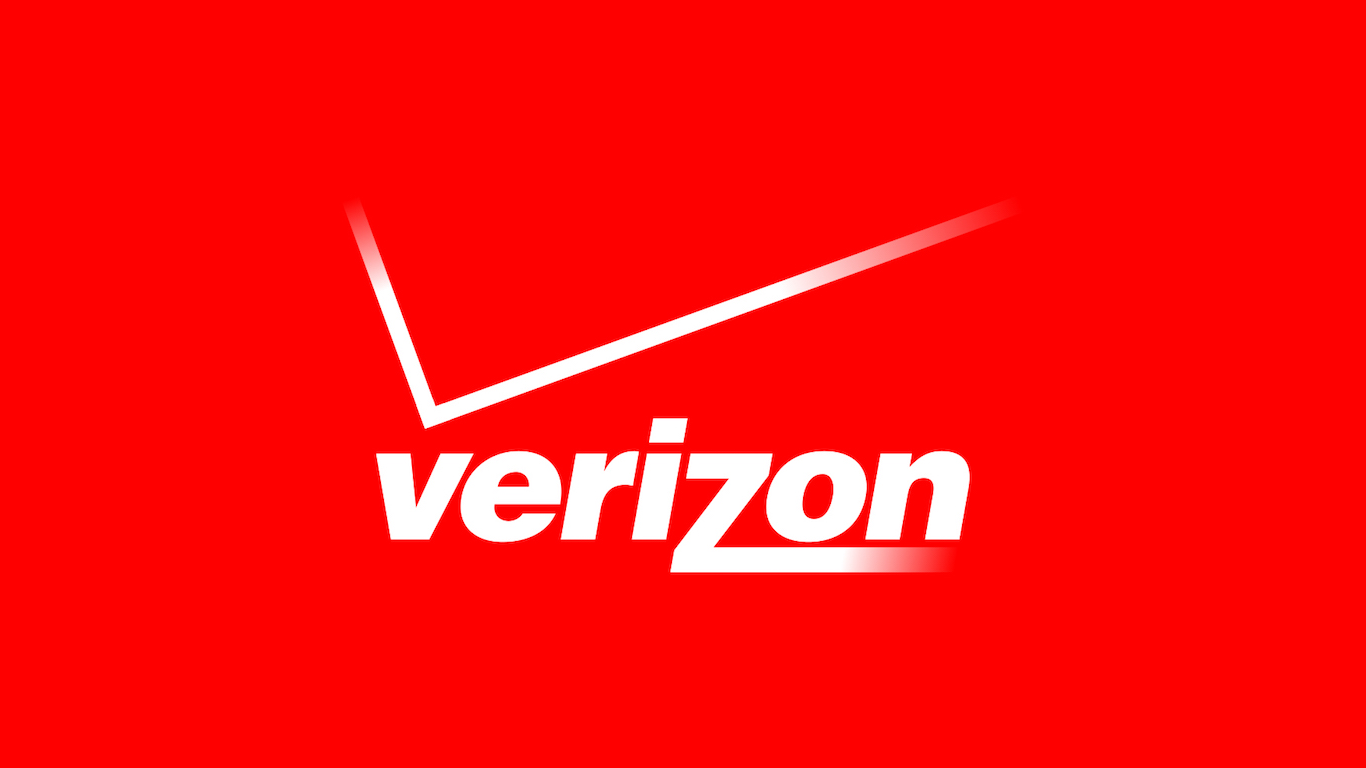
11. Verizon Communications (NYSE: VZ)
> Pct. “poor” ratings: 15.5%
With approximately 133.5 million subscribers as of the first quarter of 2015, Verizon is the largest wireless carrier in the country. In the wake of slowing smartphone market growth, Verizon has been expanding beyond its wireless business. The company recently purchased Yahoo’s online business for $4.38 billion as well as GPS vehicle tracking company Fleetmatics for $2.4 billion.
Nevertheless, customer service in the company’s core business is suffering. Verizon — along with the nation’s other three largest mobile carriers — ranks as having some of the worst customer service.
Verizon’s customer service, in some cases, escalated from poor to illegal. The Consumer Financial Protection Bureau charged in 2015 that Verizon, along with Sprint, illegally billed customers with unauthorized third-party charges. The company also ignored customer complaints about the unauthorized charges, violating the Dodd-Frank Wall Street Reform and Consumer Protection Act. Verizon was charged $70 million in redress.

10. Facebook (NYSE: FB)
> Pct. “poor” ratings: 15.6%
Roughly 1.1 billion users visit Facebook every day, or one in every seven people on the planet. Despite their rapid growth and widespread adoption, social media companies tend to have lower customer satisfaction overall. Dissatisfaction with Facebook may partially stem from the many controversies over its targeted advertising and lack of user privacy on the website.
Some users have expressed concern over the company’s facial recognition technology and the use of GPS data to recommend new friends. Also, the numerous data leaks have demonstrated potential dangers in Facebook’s extensive collection of personal information. Facebook also lacks live customer support, leaving some users helpless. More than 15% of survey respondents consider Facebook’s customer service to be poor, the 10th largest share of any major company.
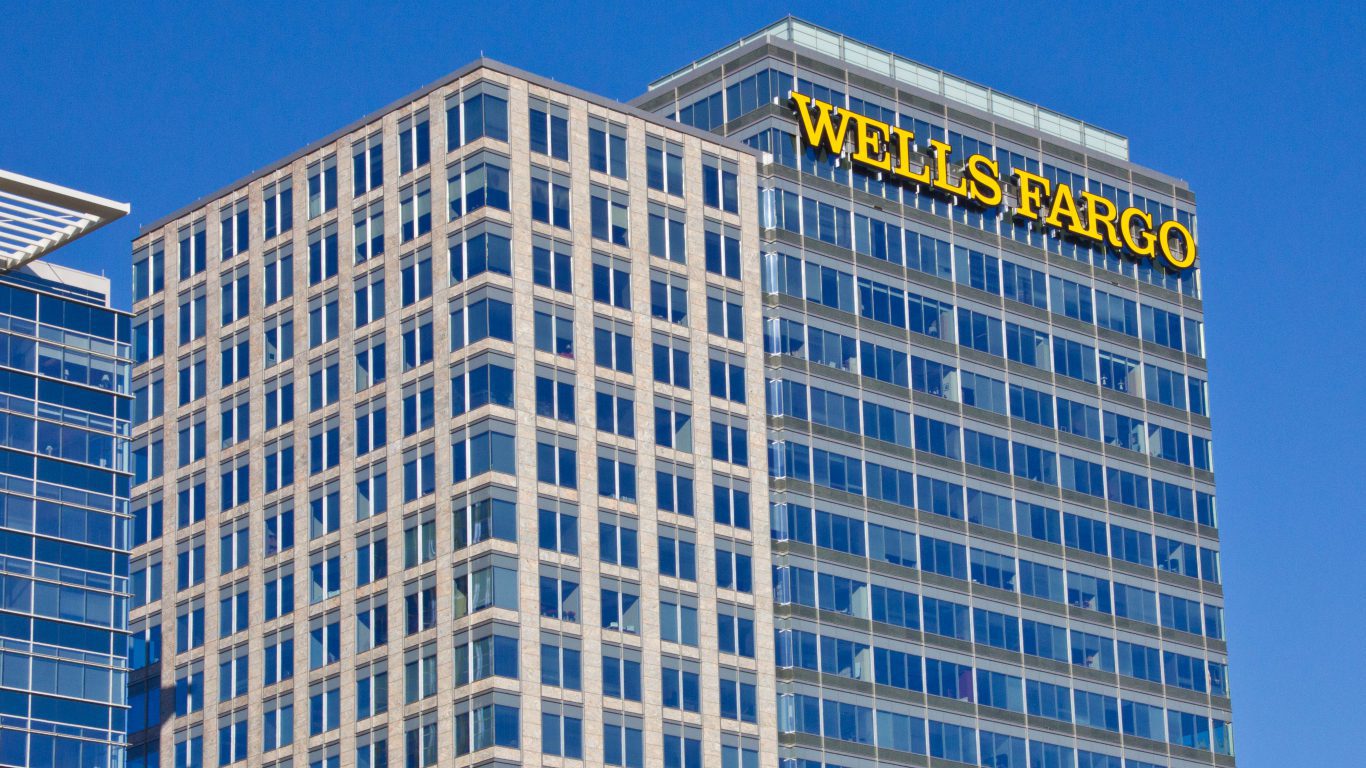
9. Wells Fargo (NYSE: WFC)
> Pct. “poor” ratings: 16.9% (bank) 15.2% (credit card)
Nearly 17% of survey respondents consider Wells Fargo’s customer service to be poor, the ninth largest share of any major company and second highest of any major bank. High, unfair, and unclear fees are the most commonly cited grievances against big banks, and Wells Fargo is often guilty of these practices.
[in-text-ad]
The Supreme Court denied earlier this year the bank’s final appeal in a $203 million class action lawsuit for charging customers unlawful fees through transaction reordering. The bank had been processing the most expensive charges on a debit card before the lower charges — instead of in the order they occurred — to drain accounts faster and charge more overdraft fees. Wells Fargo has since ceased the practice, yet many customers continue to register complaints about the bank’s unfair fees with the Consumer Financial Protection Bureau.
One reason behind the public’s negative opinion of the banking industry is its contribution to the financial crisis. The Department of Justice recently reached a $1.2 billion settlement with Wells Fargo for improper mortgage lending practices. Wells Fargo had from 2001 to 2008 certified that various residential mortgage loans were eligible for FHA insurance when they were not. As a result, the government had to pay for the claims when the loans defaulted. Misconduct in the mortgage industry, the DOJ said, helped lead to the global financial crisis. The $1.2 billion settlement is the largest ever made for FHA loan violations.
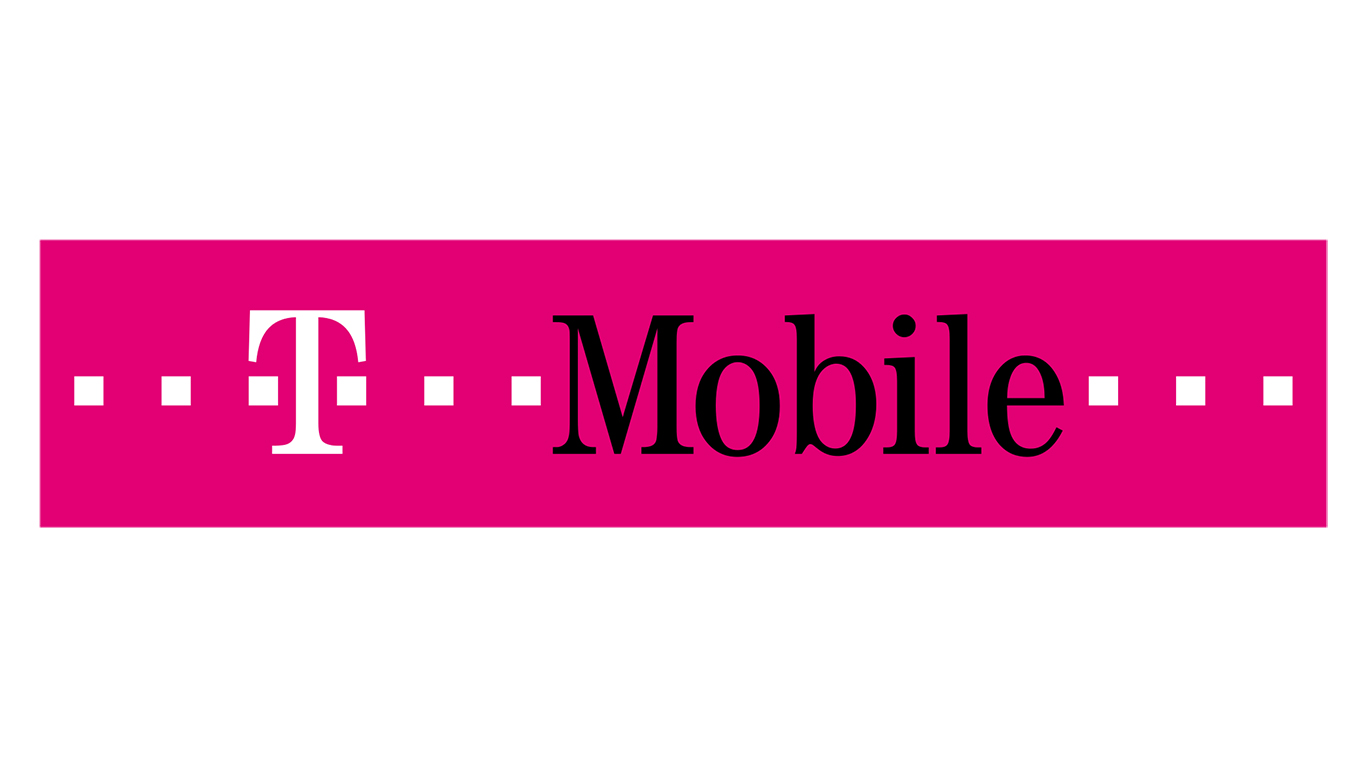
8. T-Mobile (NASDAQ: TMUS)
> Pct. “poor” ratings: 18.3%
No stranger to the Hall of Shame list, T-Mobile customer service seems only to be getting worse. Last year, 14.7% of T-Mobile customers reported a poor customer service experience with the company compared to 18.3% this year.
With the recent unveiling of T-Mobile’s unlimited data plan, T-Mobile One, the company’s customer base may expand, and with it negative customer service experience will likely expand too. The new plan offers customers unlimited talk, text, and high-speed data for a flat $70 a month. However, as is typical within the industry, there are caveats, including compromised speed and service after a customer uses a certain amount of data.
The poor customer experience is likely exacerbated by T-Mobile’s inferior product. According to Rootmetrics, an independent mobile analytics firm, T-Mobile has the worst overall network coverage of all four major wireless carriers.

7. AT&T (NYSE: T)
> Pct. “poor” ratings: 20.9% (U-verse) 18.2% (mobile)
AT&T is one of several wireless carriers on this year’s Customer Hall of Shame. In fact, the four largest carriers — Verizon, AT&T, Sprint, and T-Mobile — are all among the companies with the worst customer service. AT&T provides cable and satellite TV as well as mobile wireless services. Both arms of the company were surveyed separately, and both ranked among the worst for customer service of any company in the U.S. This is AT&T’s fourth consecutive appearance on the Customer Service Hall of Shame.
Despite constant criticism of its customer service, AT&T cut $275 million in customer service costs in fiscal 2015. The company said the savings was due to simplified offerings and increased efforts to resolve customer inquiries on the first call, as well as lower salaries and benefits and lower call volumes. AT&T reported $13.7 billion in profits in 2015, double its net income in 2014 but below its profits of $18.7 billion in 2013.

6. DirecTV
> Pct. “poor” ratings: 22.3%
More than 22% of survey respondents rated DirecTV’s customer service as poor, the sixth largest share of any company. Television service providers have some of the lowest customer satisfaction of any industry. On the same survey, more than two out of five respondents said that what they disliked most about cable companies are the high rates. According to a recent report by the FCC, the price of cable has nearly tripled in the past two decades.
[in-text-ad]
When AT&T acquired DirecTV last July, the resultant entity became the largest pay TV provider in the country. With such dominance the company may not feel the need to ever lower rates in certain markets. When advocating for the merger, the companies claimed the combination of AT&T-DirecTV will help provide bundled services in more parts of the country, and that a phone company merging with a cable company will not pose any antitrust problems. According to advocacy organization Consumer Reports, however, customers are less likely to be satisfied with bundles than with single service subscriptions. While AT&T CEO Randall Stephenson claimed when testifying before the Senate that the merger would result in savings, he admitted that those savings would not be passed on to customers.
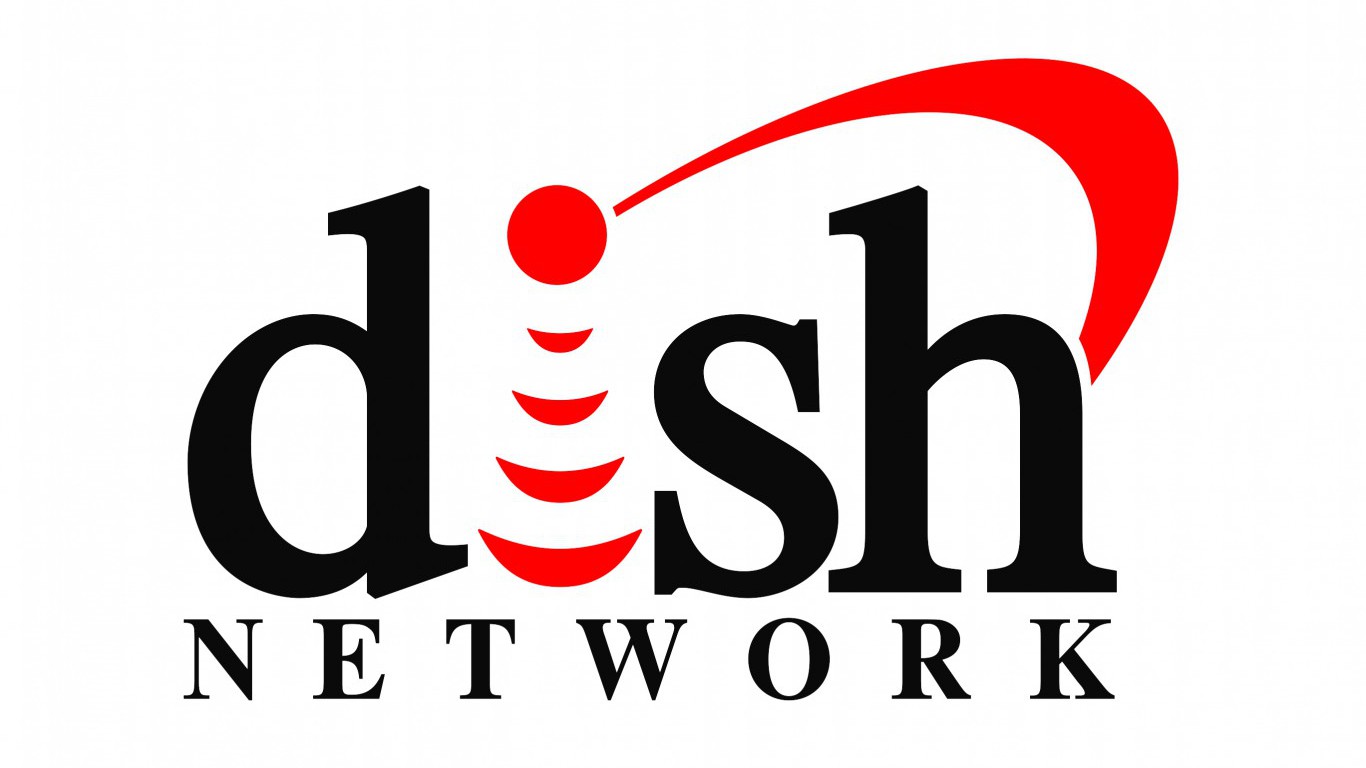
5. Dish Network (NASDAQ: DISH)
> Pct. “poor” ratings: 23.2%
Some geographical regions are often serviced by a single cable service provider. Without competition, cable companies rarely have an incentive to invest in improving their customers’ experience, and partially as a result they are notorious for poor customer service.
Dish Network, a cable company servicing 40 metro areas nationwide, is no stranger to the Customer Hall of Shame. With 23.2% of survey respondents reporting a negative customer experience, the company ranks among the country’s worst for customer service for the fifth straight year. Despite widespread disapproval among customers, the company’s website boasts round the clock customer support and a live chat feature.
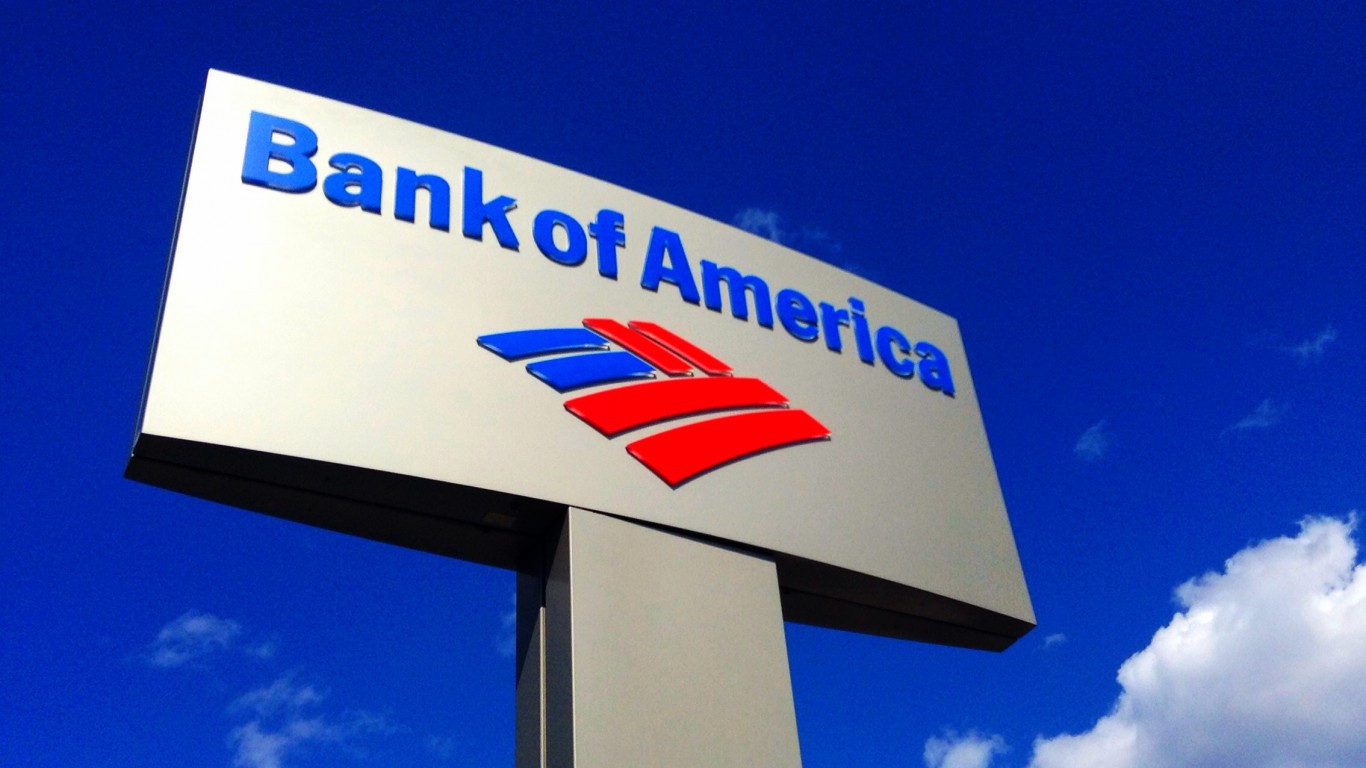
4. Bank of America (NYSE: BAC)
> Pct. “poor” ratings: 24.0% (bank) 22.9% (credit card)
The nation’s largest banks are also among the most reviled companies. The U.S. banking industry earned its poor reputation for issuing low quality housing loans leading up to the housing crisis. These bad loans led to massive losses for investors and homeowners and helped lead to the global financial crisis and the recession that began in 2007. Bank of America appears to have played an especially large role. The bank reached a settlement in 2014 to resolve an investigation into its role in the financial crisis. The $17 billion settlement is the largest any bank paid in relation to the events leading up to the financial crisis.
While this may partially explain poor perceptions of BofA among Americans, it does not fully explain the bank’s abysmal customer service score. With 24% of people reporting a poor experience, BofA trails only three other companies at the top of the Customer Service Hall of Shame.
When asked what bothers you most about the big banks, respondents most frequently cited high fees, poor service, or unfair fees, which together accounted for nearly a third of all responses. The Consumer Financial Protection Bureau received 38,833 complaints between 2012 and 2014 about BofA, considerably more than any other bank.

3. Time Warner Cable
> Pct. “poor” ratings: 24.3%
More than half of all customers surveyed reported a negative experience with Time Warner Cable, making the company one of only three with a majority of respondents reporting such a bad experience. Of those, roughly half rated their experience as poor, the worst possible review.
[in-text-ad]
Often, having some of the nation’s worst customer service does not hurt a company as much as one might expect. Time Warner Cable may be one such example, as the company reported revenue of $28.1 billion in 2015, up 6.3% from fiscal 2013. Notably, the cable giant also invested $4.1 billion to improve its customer experience.
Earlier this year, Charter Communications acquired Time Warner Cable for $60 billion. The new company is now the second largest cable company after Comcast, and the third largest pay-TV company behind AT&T and Comcast — which are also in this year’s Customer Hall of Shame. Being larger, it seems, does not improve customer satisfaction.

2. Sprint Nextel (NYSE: S)
> Pct. “poor” ratings: 25.1%
Given the highly satisfied customers of phone makers Samsung and Apple, both of which made the Customer Service Hall of Fame this year, Americans seem to love their cell phones but dislike the network providers. More than one-quarter of survey respondents reported a poor customer experience with Sprint Nextel, trailing only Comcast for the worst customer service of any U.S. company.
Sprint Nextel has struggled to compete with larger providers such as Verizon and AT&T. Recently, however, due in part to an aggressive advertising campaign, the company seems to be on a comeback. In the first quarter of 2016, the company reported a 173,000 net increase in the number of postpaid phone subscribers. This was a considerable improvement over net subscriber losses in previous periods and, for the first time in five years, Sprint gained more subscribers from its three biggest rivals than it lost to them.
While Sprint stock has surged over the past year, some investors are likely waiting to see if the company can hold onto its new subscribers. Doing so may hinge on the quality of customer service.
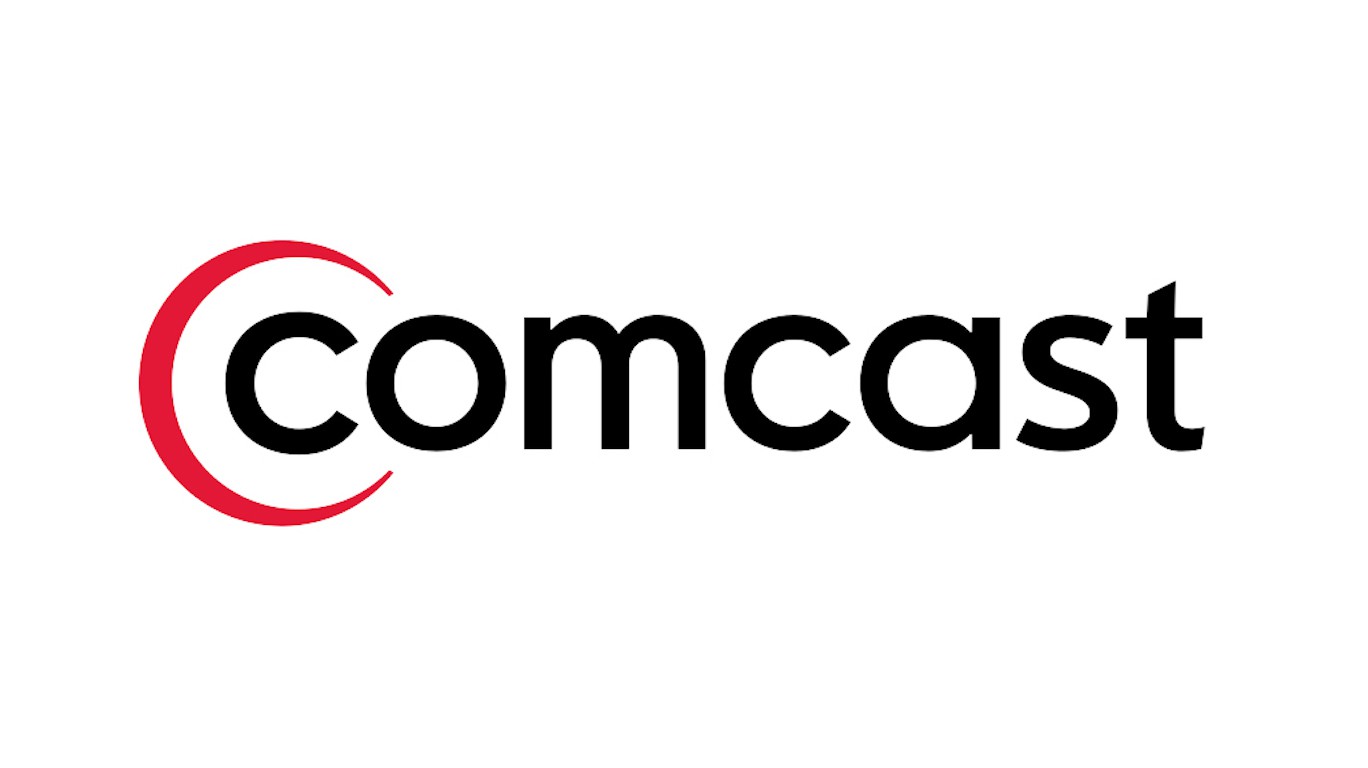
1. Comcast (NASDAQ: CMCSA)
> Pct. “poor” ratings: 27.8%
No company’s customer service is more reviled than Comcast’s — 27.8% of customers surveyed rated Comcast’s customer service as poor. According to data provided to technology news company Ars Technica through a freedom of information request, the FCC receives more complaints about Comcast than about AT&T, Verizon, and Time Warner Cable combined. Comcast’s enormous national presence could partially explain the larger number of complaints. Comcast Corporation operates the largest cable network in the country and owns television networks such as NBC, entertainment business Universal Pictures, and multiple theme parks.
As customer service expert Hyken noted, the expectations of Comcast customers are extremely high. Also, when the company’s services fail, as in the interruption of a favorite TV show, customers easily become dissatisfied and solutions are much more difficult to find compared to many other industries.
More than 40% of survey respondents said that the excessively high rates are what bothers them most with cable companies. One of the most common complaints to the FCC relates to billing, particularly from customers who thought they had unlimited data when in fact they were responsible for fees for going over a data cap.
Methodology:
24/7 Wall St. commissioned Zogby Analytics to conduct an online national survey of more than 1,500 randomly chosen respondents to rate customer service at 151 of the best-known companies in the country. Seventeen industries are represented in the study.
Respondents were asked to evaluate customer service quality as “excellent,” “good,” “fair,” or “poor.” Of the 151 companies, 112 had at least 500 valid responses. We did not consider companies with fewer valid responses.
When a company with multiple divisions scored as one of the best or worst for customer satisfaction, we listed the company only once in our rank.
The 15 companies with the highest percentage of “poor” responses represent our Customer Service Hall of Shame. Using the same methodology, the 15 companies with the highest percentage of “excellent” responses became our Customer Service Hall of Fame. This is the third year 24/7 Wall St. has conducted this study.
[googleapps domain=”docs” dir=”spreadsheets/d/1ZvXuAx9_km2EoKANFru2Lg2aqqB_8jN7xSeOwX18n7U/pubhtml” query=”widget=true&headers=false” width=”100%” height=”750″ /]
The average American spends $17,274 on debit cards a year, and it’s a HUGE mistake. First, debit cards don’t have the same fraud protections as credit cards. Once your money is gone, it’s gone. But more importantly you can actually get something back from this spending every time you swipe.
Issuers are handing out wild bonuses right now. With some you can earn up to 5% back on every purchase. That’s like getting a 5% discount on everything you buy!
Our top pick is kind of hard to imagine. Not only does it pay up to 5% back, it also includes a $200 cash back reward in the first six months, a 0% intro APR, and…. $0 annual fee. It’s quite literally free money for any one that uses a card regularly. Click here to learn more!
Flywheel Publishing has partnered with CardRatings to provide coverage of credit card products. Flywheel Publishing and CardRatings may receive a commission from card issuers.
Thank you for reading! Have some feedback for us?
Contact the 24/7 Wall St. editorial team.